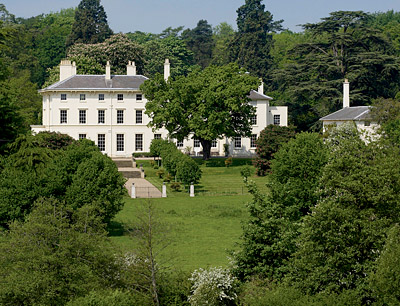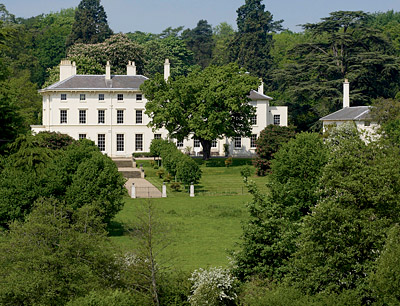Luxury property for sale in East Anglia
Landowners, farmers and dealers alike have their eyes fixed on the East of England finds Penny as she looks at property for sale in East Anglia


Landowners, farmers and investors alike have their eyes firmly fixed on the east of England, where land values continue to outperform the national average, Savills say. However, according to Christopher Miles of the firm's Farm Agency in the region: ‘The gap between the better land in the popular locations and the poorer land in the less-attractive locations is widening.
As a result, values in the East now range from £4,500 to £8,000 an acre, compared with a national average of about £5,500 an acre.' And, with nearly half of all farmland offered for sale in the first quarter of 2010 located in East Anglia-4,669 acres compared with 10,243 acres in England as a whole-the eastern counties are likely to set the pace in the sector for the rest of the year.
This is especially true of the country-estates market, where the launch of the historic 680-acre Chadacre estate near Long Melford, Suffolk, through Savills (020-7499 8644) at a guide price of ‘excess £10 million', represents the first major UK estate sale of 2010. Set in its own private valley on the banks of the Chad, a tributary of the Stour, six miles from the picturesque Suffolk villages of both Lavenham and Long Melford, Chadacre dates back beyond Domesday, and, for centuries, was the seat of the Plampin family.
The last of the Plampin family to live at Chadacre Hall was Vice-Admiral Robert Plampin, whose eventful naval career included a spell as the commander of the British colony of St Helena during Napoleon's incarceration there.

Vice-Admiral Plampin died childless in 1834, and the Chadacre estate was bought by London banker Thomas Hallifax, who already had substantial property interests in the area. His family became major local benefactors, building houses, the school and the schoolhouse, and extensively renovating the church. When the estate was finally sold in 1918, its 2,300 acres included 22 farms and 54 houses, many of which were donated to estate workers.
One of Hallifax's first actions on acquiring Chadacre was to commission the Duke of Wellington's architect, Philip Hardwick, to demolish the existing house and create the present Chadacre Hall in the favoured Regency style. As surveyor to the Portman estate in London, Hardwick was best known for his public buildings, which included St Bartholomew's hospital (1826); Chadacre was the only country house wholly designed by him.
In 1918, Edward Cecil Guinness, 1st Lord Iveagh, another well-known philanthropist, bought the Chadacre estate. Three years later, he founded the Chadacre Agricultural Institute there, one of the first in England, whose purpose was to provide agricultural education for the sons of farm labourers, smallholders and farmers in Suffolk and the surrounding counties.
Exquisite houses, the beauty of Nature, and how to get the most from your life, straight to your inbox.
The architect and artist Cyril Edward Power was hired to design appropriate additions and alterations to the hall. The mansion was commandeered by the army during the Second World War, but, thereafter, reverted to its former role until 1989, when the institute finally closed down. A year later, Tory grandee David Hart, son of the founder of Ansbacher merchant bank, bought the estate, by then in a pretty poor state of repair, for a reputed £3m.
Today, Chadacre is once again a classic English country seat, boasting a grand, Grade II-listed hall, faithfully restored to its original Regency splendour and surrounded by acres of undulating parkland, a lake, walled gardens, seven secondary houses and cottages, a renovated 19th-century model farm, sporting woodlands and a productive mixed farm-‘all ring-fenced and totally private, but in no way isolated', adds Crispin Holborow of Savills.
The renovation of Chadacre Hall has been a remarkable achievement by any standards, including those of English Heritage, the Georgian Group and the legion of architectural experts and specialist craftsmen who have been involved along the way. The 15,660sq ft main house has sumptuous accommodation on three floors, including reception and staircase halls, four formal reception rooms, a state-of-the-art kitchen/breakfast room, a four-room master suite, nine further bedrooms and five further bathrooms.
The detached east wing provides garaging, a gun room and estate offices, plus a further four bedrooms and two bathrooms. For those who prefer a simpler life, Savills (01473 234800) are offering timeless Rise Hall at Akenham, near Ipswich, Suffolk, for sale at a guide price of £2m for the whole, or in four lots.
It comprises a pretty, late-Georgian, five-bedroom farmhouse built in 1829, plus an earlier estate cottage; Suffolk barns with planning consent for conversion to two houses; other traditional farm buildings; and 175 acres of arable, pasture and amenity land with further long-term potential for development. ‘As such, we expect Rise Hall to appeal to buyers from a traditional farming background, as well as those with commercial interests,' says selling agent Peter Start.
The sale of 547-acre Black-borough Manor Farm at Middleton, near Kings Lynn, west Norfolk, for the first time in more than 100 years, has caused quite a stir among Norfolk's farming community, reports selling agent Harry St John of Smiths Gore (01865 733304). He quotes a guide price of £3.6m for the picturesque mixed farming unit, which is being sold by the Church Commissioners for Eng-land following the retirement of its former long-term tenant.
The farm, which is being offered as a whole or in up to seven lots, includes a charming, 17-century, five-bedroom farmhouse, listed Grade II, standing in four acres of grounds and surrounded by gardens, a pond, a tennis court and a paddock, plus various outbuildings, a party barn, stabling and additional ranges of farm buildings with obvious development potential.
Five further lots of land (542 acres in all) range from a paddock on the edge of the village, to larger parcels of land that are likely to suit local farmers keen to expand their acreage. Potential purchasers of Blackborough Manor Farm can bid either for the whole, for an individual lot or for any combination of lots.
Such issues don't arise in the case of handsome Richmond Hall on the edge of the medieval village of Saham Toney, in south-west Norfolk, 14 miles north of Thetford and 27 miles from Norwich. For sale through the regional office of Chesterton Humberts (01603 661199) at a guide price of £1.35m, the stylish small estate has an appealing, Tudor-style, village manor house built some 10 years ago on the site of an earlier building, with six reception rooms, four/five bedrooms and three bath/shower rooms. It comes with stabling and livestock buildings, a farm shop and tea room, and 28.4 acres of gardens, paddocks and woodland, plus a well-stocked lake.
* For more properties like this every week, subscribe and save
Country Life is unlike any other magazine: the only glossy weekly on the newsstand and the only magazine that has been guest-edited by His Majesty The King not once, but twice. It is a celebration of modern rural life and all its diverse joys and pleasures — that was first published in Queen Victoria's Diamond Jubilee year. Our eclectic mixture of witty and informative content — from the most up-to-date property news and commentary and a coveted glimpse inside some of the UK's best houses and gardens, to gardening, the arts and interior design, written by experts in their field — still cannot be found in print or online, anywhere else.
